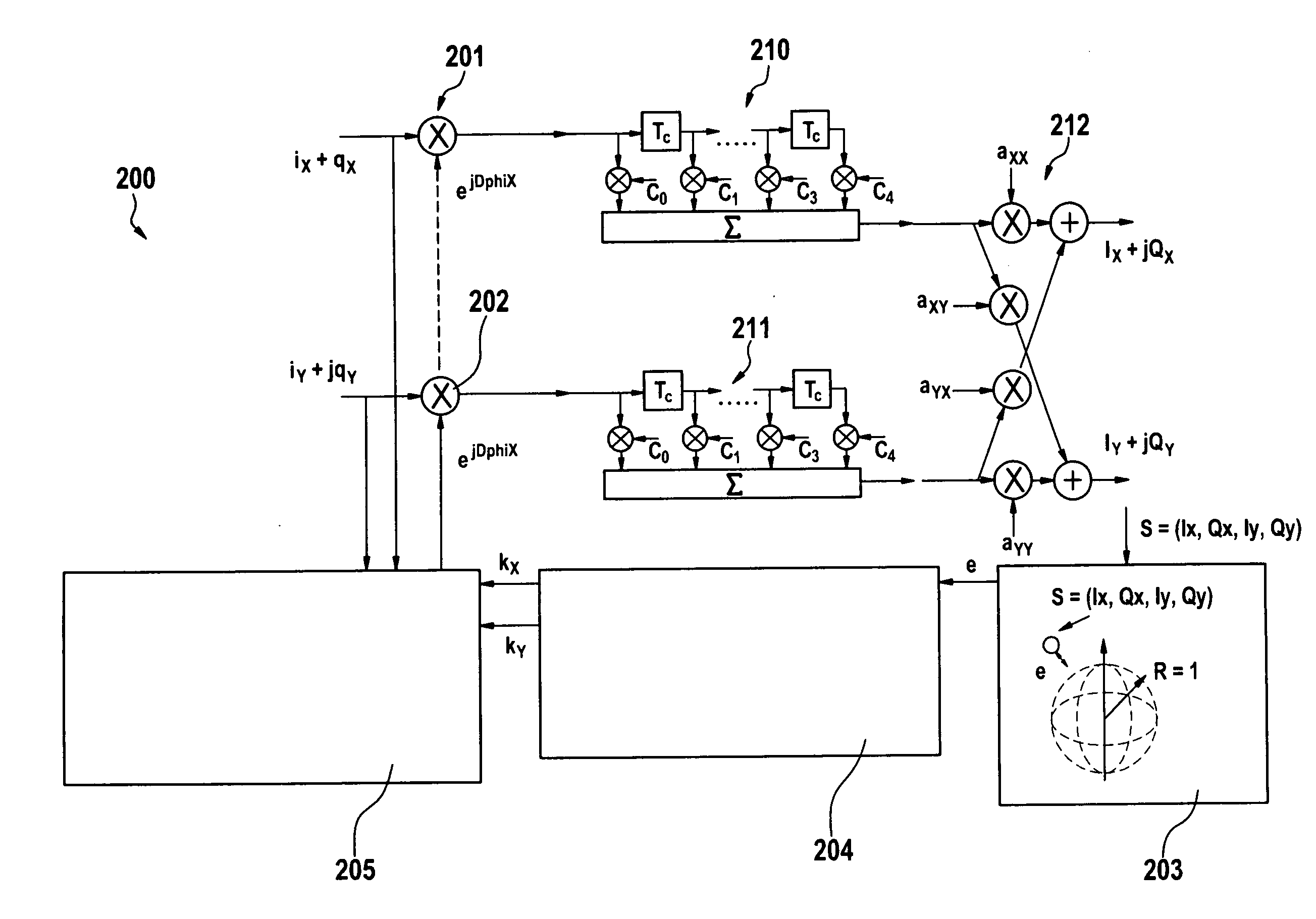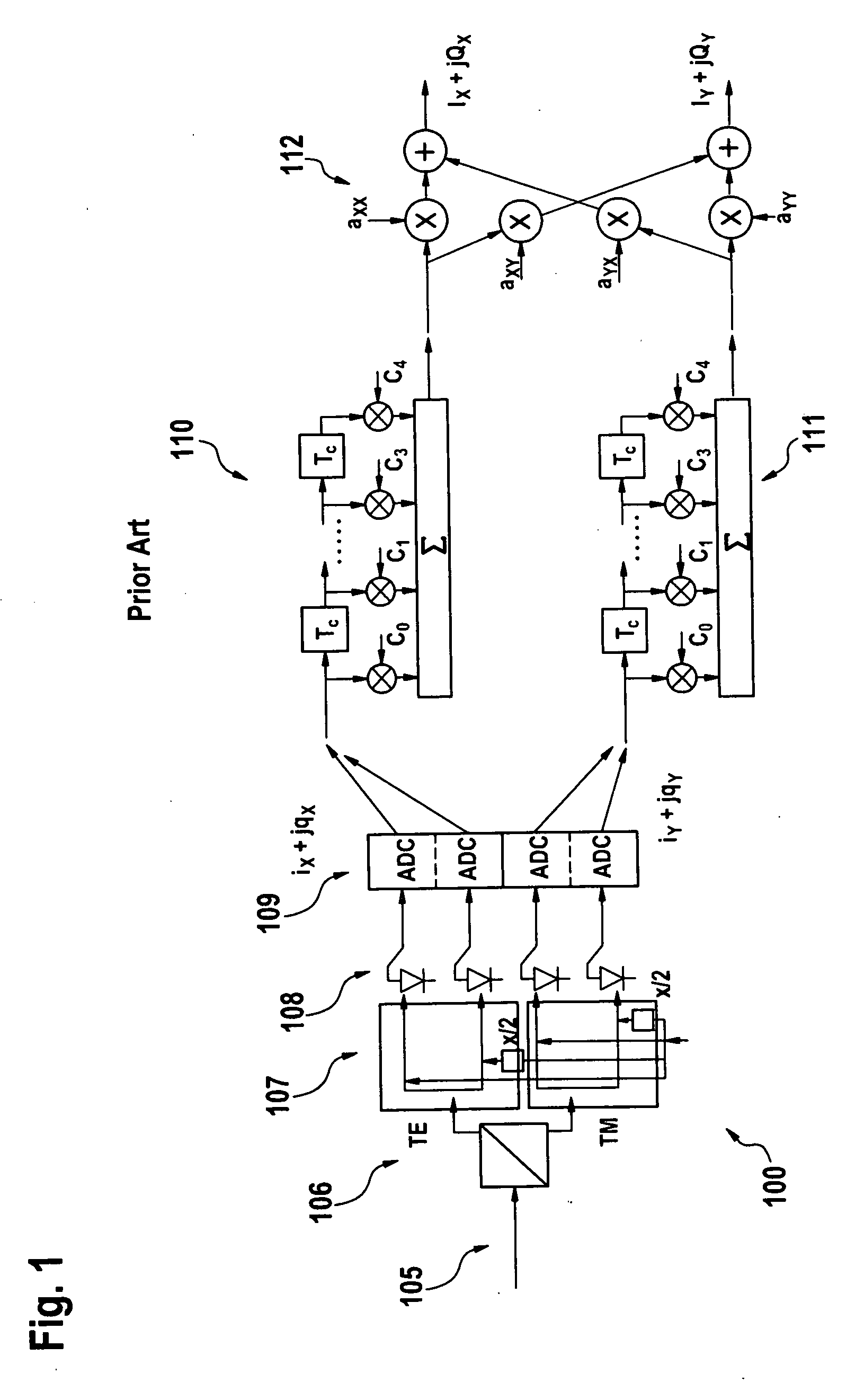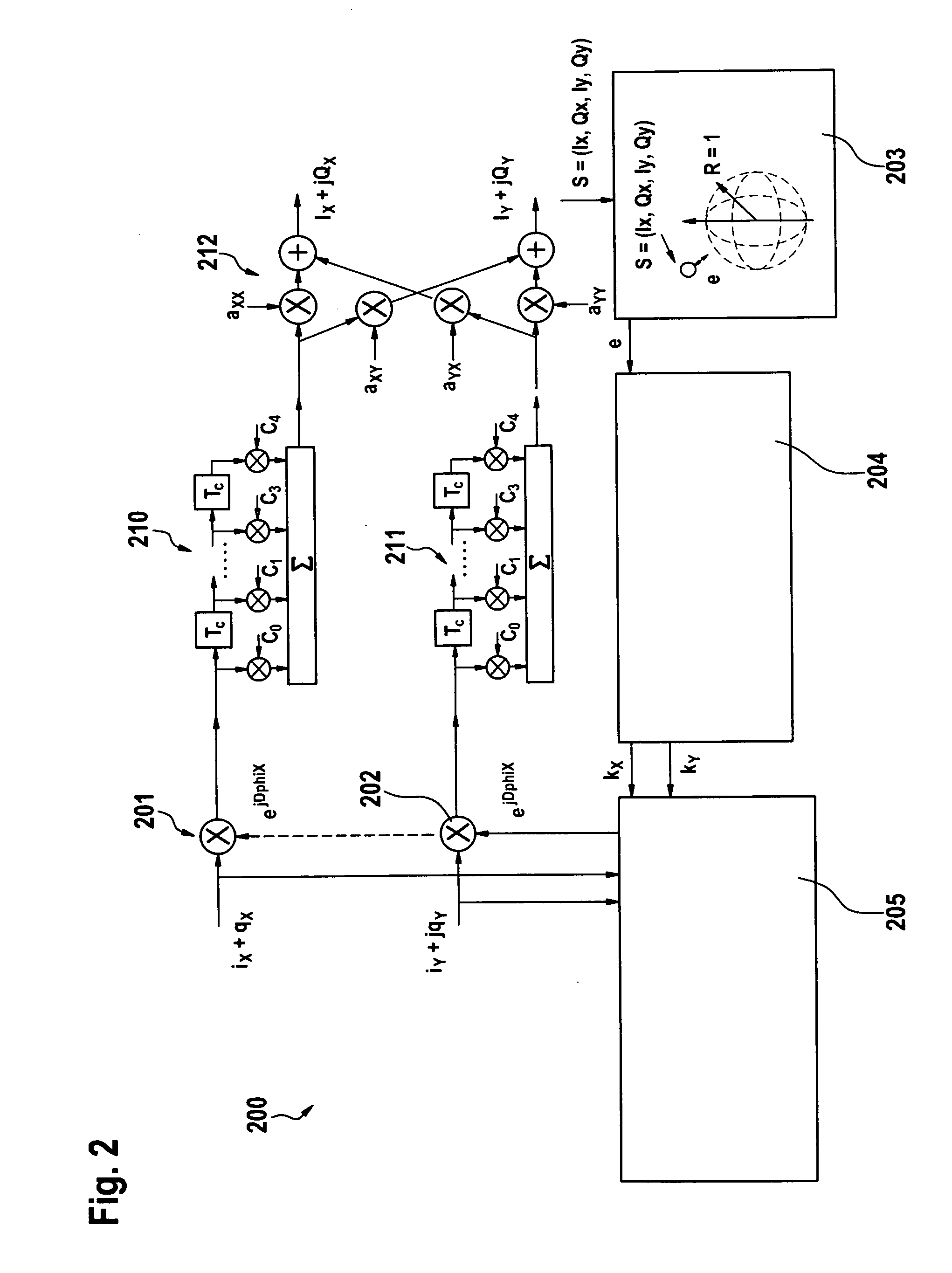Adaptive non-linearity compensation in coherent receiver
a non-linearity compensation and coherent receiver technology, applied in the field of optical communication, can solve problems such as degrading the overall system performance, and achieve the effects of reducing optical launch power, increasing signal-to-noise ratio, and increasing transmission distan
- Summary
- Abstract
- Description
- Claims
- Application Information
AI Technical Summary
Benefits of technology
Problems solved by technology
Method used
Image
Examples
Embodiment Construction
[0045]FIG. 1 was already discussed in the introductory part of this document.
[0046]FIG. 2 illustrates an embodiment of the invention employing self-phase modulation compensation before CD equalization. In the shown example the optical receiver comprises two CD equalizers 210, 211 for each signal component and a polarization de-multiplexer 212. In addition, the optical receiver comprises a phase compensator or phase modulator 201, 202 for each transversal signal component ix+jqx and iy+jqy, respectively. The phase compensators employ an offset of the signal phase, i.e. they increase or decrease the signal phase, by the phase correctors or phase corrector values DphiX and DphiY for the “x” and the “y” signal components, respectively.
[0047]According to an aspect of the invention, the phase corrector values may be determined in a phase corrector determination unit 205, using the following equations:
DphiX=kx·(ix2+qx2+iy2+qy2),
DphiY=ky·(ix2+qx2+iy2+qy2),
wherein kx, ky are the proportional...
PUM
 Login to View More
Login to View More Abstract
Description
Claims
Application Information
 Login to View More
Login to View More - R&D
- Intellectual Property
- Life Sciences
- Materials
- Tech Scout
- Unparalleled Data Quality
- Higher Quality Content
- 60% Fewer Hallucinations
Browse by: Latest US Patents, China's latest patents, Technical Efficacy Thesaurus, Application Domain, Technology Topic, Popular Technical Reports.
© 2025 PatSnap. All rights reserved.Legal|Privacy policy|Modern Slavery Act Transparency Statement|Sitemap|About US| Contact US: help@patsnap.com



